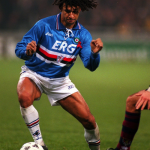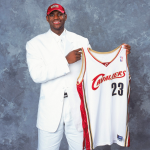
The strange history of the laced up collars
From the turn of the century to Umbro's revival for the first Premier League season, highs and lows of the strangest collars ever
May 10th, 2022
Laced up jersey collars are one of the most defining elements of style and era, from polo-style raised collars, V-shaped collars that reach up to the chest, or the ultra-lightweight crew neck collars that are so fashionable now. But none summarizes an aesthetic and an idea of design as much as the collar with the laces that intertwine to hold together the two flaps of fabric. A style that belongs to the first models adopted during the beginning of the last century, when the materials did not allow to make high-performance and lightweight jerseys as now and we relied on designs very similar to those used for everyday t-shirts.
The laced-up collar was used extensively then in football archaeology, especially in England when there was little difference between football and rugby jerseys and goalkeepers still used thick wool sweaters that bulged in the rain. A necessity to create comfortable jerseys without resorting to the use of buttons, small treasures at the time, which would allow you to unfasten without giving way, but that suddenly came back into fashion in the early '90s thanks mainly to the work of Umbro. The English brand that perhaps like no other has defined the style with which football was played during the nineties has undoubtedly signed one of the most iconic kits of its production by adding this vintage touch to the collars.
The revival of the laced up collar came in the very same season when the Premier League was inaugurated, the now historic 1992/93 when Cheadle's company supplied kits to 11 of the teams involved in the competition. A disproportionate number and unthinkable today, which Umbro honored with this template that brought back the hands of time to the origins of English football. A return to the past to look to the future, a timeless model that transforms the strongest players of the time in medieval bards or Games of Thrones extras. The laces appeared in the collar shirts of Ipswich Town, Aston Villa, Sheffield United and especially Manchester United, which became a true icon on the shoulders of Eric Cantona and Ryan Giggs. The third jersey, the one divided vertically in yellow and pale green is still one of the strangest and at the same time sought after by Red Devils fans. But even Chelsea's second kit, white with thin red stripes and the Commodore sponsor remains an example of Umbro's inventiveness and elegance at the time.
But not only Premier League, also for Ajax in that season Umbro created a second jersey distinguished by the use of laces on a pattern of vertical stripes black, green, midnight blue and petrol blue that has been taken up in recent times also by Patta. Or Saint-Etienne, who for even four consecutive years wore Lotto jerseys with a collar with overbearing lapels and medieval lacing. But it was in Italy that the fashion really took off, with Asics that the following year compared to Umbro jerseys made kits for Roma and Sampdoria following the trend of cords. Compared to those used by the English company, Asics' laces were as thick as boat ropes. And if this style was perfectly suited to the jersey of a port city, such as the blucerchiata, less so perhaps to the other sponsored teams. Or always Umbro, which made a third jersey for Napoli identical to that of Aston Villa and that of Parma, which accompanied the Emilians to the conquest of the UEFA Cup.
After the hangover of the mid-90s, when even the national teams seemed to be unable to do without this collar from the previous century - among the most representative examples are the jersey of France at Euro 96 and that of Sweden at the next World Cup, in France - the trend faded as quickly as it had arrived. Over the years, some technical sponsors have tried to resurrect this style, associating it above all with celebratory jerseys, linked to some club anniversary. Like Cagliari's first jersey at the beginning of the millennium, designed by Biemme and distinguished by flashy red laces on a blue background, or the Empoli jersey designed by Erreà for the 2002/03 season. Last season, both Sampdoria and Palermo created a commemorative jersey for their 120th anniversary. The blucerchiati with Macron created a jersey with a collar with white laces on a two-tone jersey, not unlike that of Palermo by Kappa, which is also divided in two to maintain the reference to the uniforms used a hundred years ago.
More than a century after its first appearance on a soccer field, the lace remains one of the most curious accessories seen on jerseys, capable of making them immediately timeless, suspended between a deep historical identity and a leap into Sherwood forest.





































